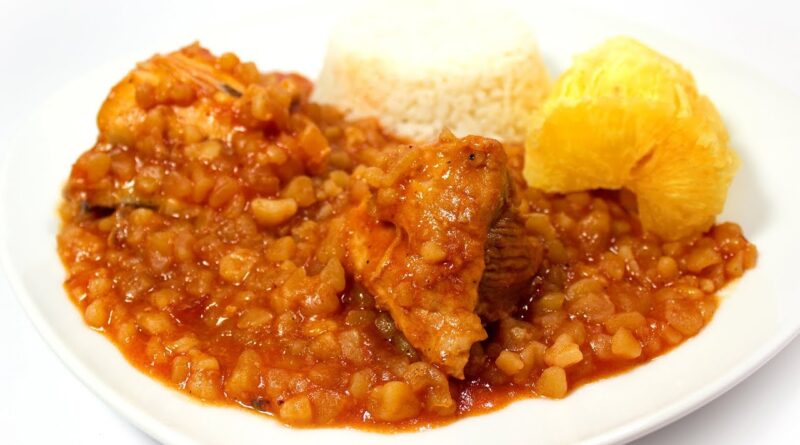Receta de carapulcra en inglés: cómo preparar este plato tradicional peruano
How to Prepare Carapulcra: A Traditional Peruvian Dish Explained
When it comes to exploring the rich culinary heritage of Peru, one cannot overlook the carapulcra, a dish that stands out for its deep flavors and historical roots. If youre looking to understand the recipe of carapulcra in English, this guide will walk you through everything you need to know to make this iconic plate from the comfort of your home.
Carapulcra is a traditional Peruvian stew made primarily with dried potatoes (known locally as papa seca), pork, and a blend of spices that give it a unique taste. It originates from the Andean region and has been cherished for centuries, blending indigenous and colonial culinary influences.
To answer the question how to prepare carapulcra in English, it is essential to understand the main ingredients and the step-by-step process to recreate this dish faithfully. Below, we will explore the essential components and detailed preparation methods that will allow you to enjoy this Peruvian classic.
Main Ingredients Needed for Carapulcra
The core ingredients that define the flavor and texture of this stew include:
- Dried potatoes (papa seca): These are sun-dried potatoes that provide a chewy texture and absorb the rich sauce perfectly.
- Pork meat: Traditionally, pork shoulder or leg is used, cut into cubes for slow cooking.
- Aji panca: A mild red chili pepper paste that adds a smoky flavor.
- Aji mirasol: Another type of dried chili that contributes a fruity and slightly spicy note.
- Garlic and onions: Essential aromatics for the base of the stew.
- Peanut butter or ground peanuts: Adds a subtle creaminess and nutty flavor.
- Herbs and spices: Cumin, black pepper, and sometimes cloves or cinnamon.
- Chicken broth or water: For simmering the ingredients until tender.
Step-by-Step Guide to Preparing Carapulcra
Now, lets delve into the preparation process to make this traditional Peruvian stew.
Step 1: Rehydrating the Dried Potatoes
The first crucial step is to soak the papa seca in water for several hours or overnight. This process softens the potatoes, making them ready to absorb the flavors of the stew while maintaining their characteristic texture. After soaking, rinse and drain them thoroughly.
Step 2: Preparing the Pork
Cut the pork into bite-sized cubes, removing excess fat if desired. Season the meat with salt and pepper to taste. Some cooks like to marinate the pork with a little garlic and aji panca paste beforehand to enhance flavor.
Step 3: Making the Chili Paste
To create the signature sauce, soak the aji panca and aji mirasol peppers in hot water until soft. Then, blend them with garlic, a bit of onion, and some broth or water to form a smooth paste. This paste will be the base of the stew, providing its vibrant color and smoky undertones.
Step 4: Cooking the Aromatics
In a large pot or clay cazuela, heat some vegetable oil and sauté finely chopped onions until translucent. Add minced garlic and cook until fragrant. Then, stir in the chili paste, allowing it to cook for a few minutes to deepen the flavors.
Step 5: Combining Ingredients and Simmering
Add the pork cubes to the pot and brown them slightly with the chili mixture. This step locks in the meat’s juices. Next, incorporate the rehydrated dried potatoes and pour enough chicken broth or water to cover the ingredients. Bring the stew to a gentle boil, then reduce the heat to low and let it simmer slowly.
Step 6: Adding Peanuts and Seasonings
Once the meat and potatoes are tender, stir in ground peanuts or a spoonful of peanut butter. This addition gives the stew a rich, creamy texture and balances the spicy notes. Season with cumin, salt, and pepper to taste. Some variations include a pinch of cinnamon or cloves for extra warmth.
Step 7: Final Touches
Let the stew cook uncovered for a few more minutes to thicken the sauce. Adjust the seasoning as necessary. Traditionally, carapulcra is served hot, accompanied by rice or boiled corn, and sometimes a side of fresh salad.
Exploring Variations and Tips for Perfecting This Peruvian Classic
While the basic preparation remains consistent, there are several variations of the traditional carapulcra recipe that reflect regional preferences and family traditions across Peru.
For example, some versions incorporate chicken or beef instead of pork, or combine meats for a richer flavor profile. Others may add dried fruits such as raisins to introduce a subtle sweetness. In coastal areas, its common to find versions that include peanuts as a more prominent ingredient or even incorporate local vegetables.
When preparing the dish, one important tip is to use authentic papa seca whenever possible. While dried potatoes can be hard to find outside Peru, you might find substitutes like freeze-dried potatoes or even small diced fresh potatoes, although these will alter the texture and authenticity slightly.
Another useful tip is to allow the stew to rest after cooking. Like many traditional Peruvian dishes, carapulcra often tastes better the next day as the flavors meld and deepen. This makes it a perfect meal to prepare in advance for family gatherings or special occasions.
Health Benefits and Cultural Significance
Beyond its delicious taste, this stew carries significant cultural weight in Peru. It is often prepared during festivals, family celebrations, and national holidays. The use of dried potatoes is a nod to ancient preservation techniques that allowed Andean communities to store food through harsh winters and dry seasons.
From a nutritional standpoint, the combination of pork, potatoes, and peanuts offers a balanced source of protein, carbohydrates, and healthy fats. The spices not only enhance flavor but also provide antioxidant properties, making this dish both hearty and wholesome.
Serving Suggestions and Pairings for Your Peruvian Stew
To enjoy your homemade carapulcra to the fullest, consider pairing it with traditional sides that complement its flavors and textures. Some popular options include:
- White rice: A neutral base that absorbs the rich sauce beautifully.
- Boiled corn (choclo): Adds a sweet crunch that contrasts nicely with the stew.
- Fresh salad: Typically made with lettuce, tomatoes, and onions, dressed lightly with lemon or vinegar to refresh the palate.
- Peruvian chili sauce (ají): For those who enjoy an extra kick of heat.
In terms of beverages, traditional chicha morada (a purple corn drink) or a glass of Peruvian pisco sour can elevate your dining experience, immersing you fully in the flavors of Peru.
Why Learning to Cook Carapulcra is a Journey into Peruvian Heritage
Cooking this dish is more than just following a recipe in English; it’s about connecting with Peru’s history and diverse culinary landscape. Each ingredient tells a story, from the ancient techniques of drying potatoes to the influence of Spanish spices and peanuts introduced from Africa.
By preparing carapulcra, you engage in a culinary tradition that has been passed down through generations. It allows food enthusiasts worldwide to appreciate the complexity and warmth of Peruvian cuisine beyond the famous ceviche or lomo saltado.
Moreover, mastering this dish opens doors to exploring other regional specialties and understanding the broader context of Andean gastronomy. Whether you are a professional chef, a passionate home cook, or simply curious about international flavors, learning how to make this stew enriches your culinary repertoire significantly.
Summary: Unlocking the Secrets of Carapulcra Preparation
To summarize, preparing this traditional Peruvian stew involves:
- Rehydrating dried potatoes to achieve the right texture.
- Preparing and seasoning pork meat carefully.
- Creating a flavorful chili paste with aji panca and aji mirasol.
- Sautéing aromatics and combining all ingredients for slow simmering.
- Adding peanuts and spices for richness and depth.
- Serving with traditional sides like rice, corn, and salad.
Following these steps will help you successfully recreate an authentic Peruvian carapulcra that honors its heritage while delighting your taste buds. Don’t hesitate to experiment with minor variations, adjusting spice levels or adding your own twist to this timeless dish.
Embrace the flavors, textures, and stories behind this remarkable stew, and enjoy a genuine taste of Peru right at home.

